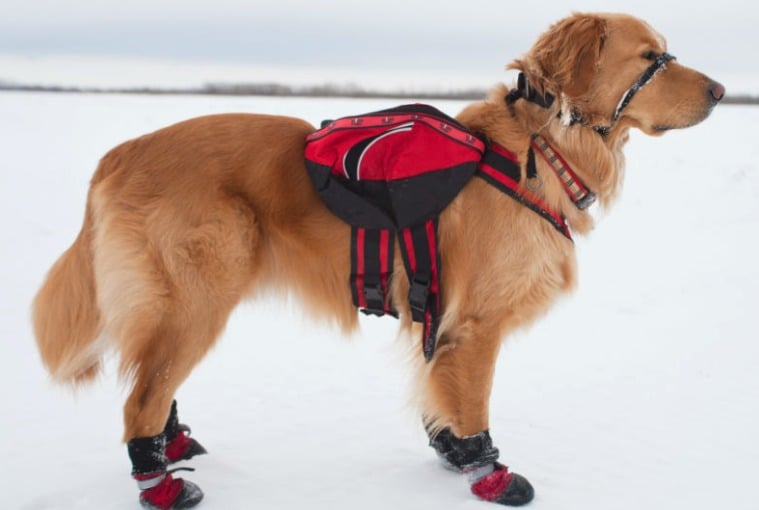12 Game-Changing Tricks That Stop Dogs from Ruining Your Home
Your home should be your sanctuary—but it’s hard to relax when your favorite shoes are shredded, your couch cushions look like snowstorms, and your dog has that guilty “whoops” face again.
Destructive behavior is one of the most frustrating parts of dog ownership, and it’s often misunderstood. It’s not about spite. It’s usually your dog’s way of saying, “I’m stressed,” “I’m bored,” or “I need help.”
The good news? You can stop the chaos without sacrificing your relationship with your pup. With the right mix of understanding, redirection, and structure, your dog can learn to be calm, content—and far less destructive.
This guide breaks down the most common reasons dogs tear up your home and gives you proven strategies to curb the behavior for good. Let’s save your living room and your sanity.
1. Pinpoint the Root Cause of Destructive Behavior
Ever watched your dog and wondered why your favorite shoes are their favorite chew toy?
Understanding the root cause of your dog’s destructive behavior is crucial. Anxiety, boredom, or even teething could be the culprits. Spend time observing your dog’s routine and note any triggers.
This detective work might reveal more than you expect. Perhaps the mailman’s daily arrival sends them into a frenzy, or they simply need more engaging activities.
Identifying these patterns can help tailor a more effective approach to curb their destructive habits, ultimately saving your home (and shoes) from becoming collateral damage.
2. Give Them More Physical Exercise
A tired dog is a well-behaved dog. If your furry friend seems like they’re part of a demolition team, they might just need to burn off some energy. Regular exercise, like long walks or energetic games of fetch, can work wonders.
Not only does it keep them physically fit, but it also provides the mental stimulation they crave. Try different activities and see what they enjoy most, be it swimming or running alongside you on a jog.
Making exercise a daily habit can transform your dog’s behavior. Plus, it’s a great way to bond and improve your own fitness levels too!
3. Introduce Mental Enrichment Activities
Imagine your dog as a canine Einstein, eager for challenges. Mental enrichment activities can be a game-changer. Puzzle toys and treat-dispensing balls are fantastic tools to keep their minds occupied.
Teaching new tricks or commands not only stimulates their brain but also strengthens your bond. The satisfaction they get from mastering a task is evident in their wagging tail.
Keeping their brain engaged can reduce the urge to destroy furniture or other household items. Who knew a little mental workout could be the key to peace at home?
4. Provide Chew-Appropriate Alternatives
Does your dog’s chewing habit drive you up the wall? Offering them chew-appropriate alternatives can shift their focus away from your belongings. Rubber toys, rawhide bones, or even frozen carrots are excellent choices.
These options can satisfy their natural urge to chew while keeping them entertained. Rotate the toys to maintain their interest, much like a child with new playthings.
By channeling their energy into safe items, you’ll protect your furniture and shoes. It’s a simple yet effective strategy that can make a world of difference.
5. Use Crate Training for Downtime
Consider the crate as your dog’s personal retreat. When introduced positively, crate training can provide a safe space for them during unsupervised moments.
Imagine it as a bedroom for your furry friend, offering security and comfort. It’s not a punishment but a peaceful haven where they can relax.
Over time, your dog will associate the crate with relaxation and safety. This can prevent unwanted behavior when you’re not home, preserving both your sanity and your possessions.
6. Rotate Toys to Prevent Boredom
Toy rotation can be the secret sauce to a happy, non-destructive dog. Dogs, much like children, can quickly tire of the same toys. Keeping their toy selection fresh and exciting prevents boredom.
Switching out toys every few days can reignite their interest and keep them engaged. This variety can drastically reduce the chances of them seeking entertainment in your shoes or furniture.
A playful environment can keep their tails wagging and your home intact. It’s a simple trick that can have lasting effects on your dog’s behavior.
7. Block Access to Off-Limit Areas
Curiosity might not kill the cat, but it can certainly lead a dog into mischief. Blocking access to off-limit areas is an effective way to prevent unwanted destruction.
Use baby gates or closed doors to keep them out of rooms with tempting chewables when you’re not around. It’s a straightforward strategy that sets clear boundaries.
Creating a safe environment not only protects your belongings but also gives your dog a sense of boundaries, reducing anxiety and promoting peace of mind.
8. Address Separation Anxiety Proactively
Separation anxiety is more common than you might think. If your dog turns into a mini-destruction machine when left alone, they might be experiencing panic.
Gradually desensitize them to your departures by making them short and sweet. Provide calming aids or a special toy to comfort them.
Taking steps to address this anxiety not only protects your home but also aids your dog’s emotional well-being. A less anxious dog is a less destructive one.
9. Avoid Punishment—Redirect Instead
Punishment can often backfire, increasing your dog’s anxiety or confusion. Instead, calmly redirect them to a more acceptable behavior.
If you catch them in the act, swap your shoe for a toy and praise them when they chew it.
This positive reinforcement encourages better habits without fear. Over time, your dog will learn what’s off-limits and what’s allowed, all while maintaining a trusting relationship with you.
10. Dog-Proof Your Living Space
Think of dog-proofing as child-proofing with a canine twist. Ensuring your home is safe for your dog can prevent a lot of chaos.
Keep shoes, remotes, and cords out of reach. Consider using bitter sprays on furniture legs during training periods to deter chewing.
Taking these precautions can significantly reduce the chances of damage and keep your living space harmonious. Plus, it gives you peace of mind knowing your dog is safe and your home is intact.
11. Establish a Predictable Daily Routine
Dogs are creatures of habit. Establishing a predictable daily routine can work wonders for their behavior. Consistent feeding, walking, and playtimes reduce stress-related destruction.
Structure provides security and clarity, helping them understand what to expect each day. This can minimize anxiety and destructive tendencies.
A well-structured day can be a game-changer for both you and your dog, creating a balanced and peaceful coexistence.
12. Enroll in Obedience Training or Behavior Classes
Sometimes, calling in the experts can be the best option. Obedience training or behavior classes can provide professional guidance to tackle persistent issues.
These classes not only teach commands and tricks but address underlying behavioral problems.
If your dog’s destructive habits are escalating or rooted in fear, professional help can make a significant impact. It’s a step towards a happier, well-behaved companion.


















